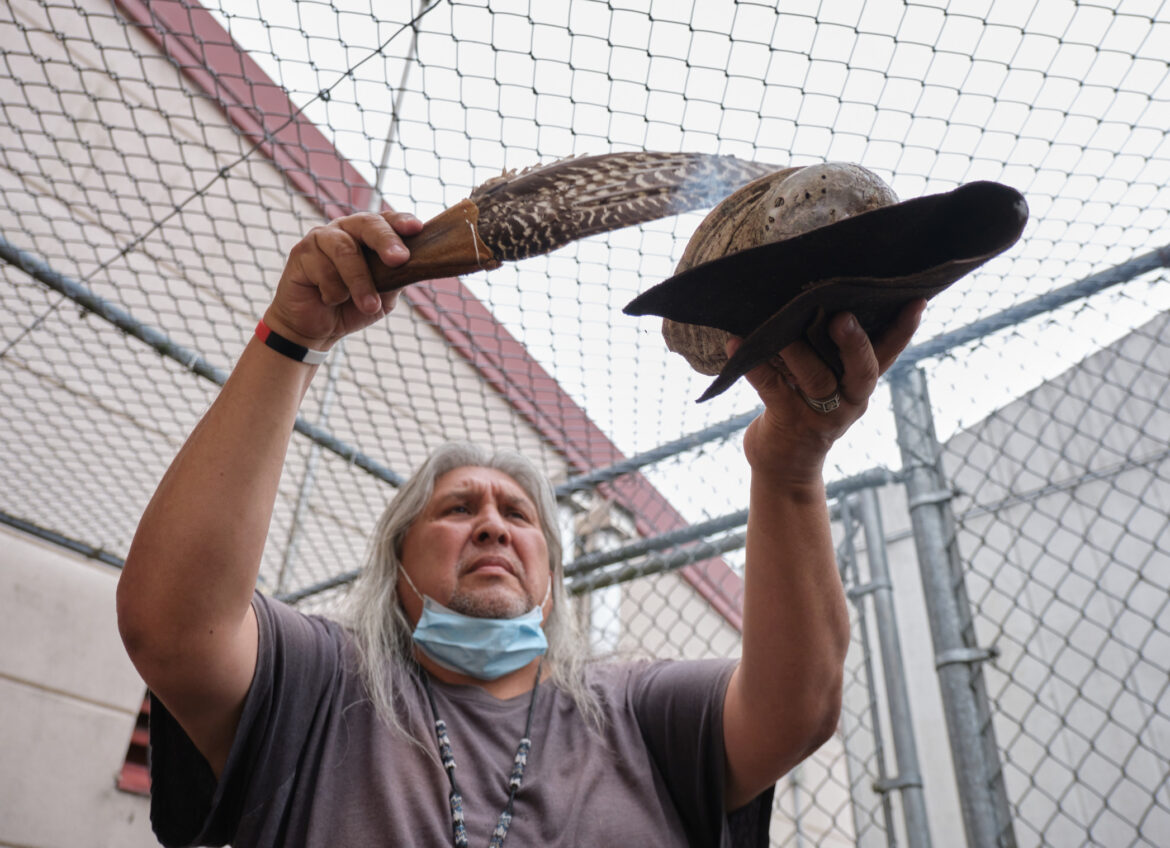Behavioral health researchers, often, used to routinely dismiss using cultural rituals to help alter people’s actions, including as a tool to steer at-risk youth away from criminality.
Pushing against that presumption, researchers of color and like-minded others increasingly have proven the case for practice-based evidence to incorporate ritualistic programming into strategies to rehabilitate, among others, juvenile offenders. Supporters of such programming include the National Congress of American Indians Tribal Juvenile Justice, which has written that “tribal youth offenders in the juvenile justice system have demonstrated better outcomes [after] they receive targeted, culturally and community-based services.”
For Youth Today and the Juvenile Justice Information Exchange, Portland, Oregon-based photojournalist Alex Milan Tracy captured an Indigenous drumming circle at that state’s Tillamook Youth Correctional Facility. There, incarcerated Native American youth are exploring tribal history, culture and identity as part of a trauma-informed approach to a population that nationwide, according to the Prison Policy Initiative, has been three times more likely than their white counterparts aged 21 and under to be incarcerated.
As required by corrections officials, none of the photos feature youths’ faces.
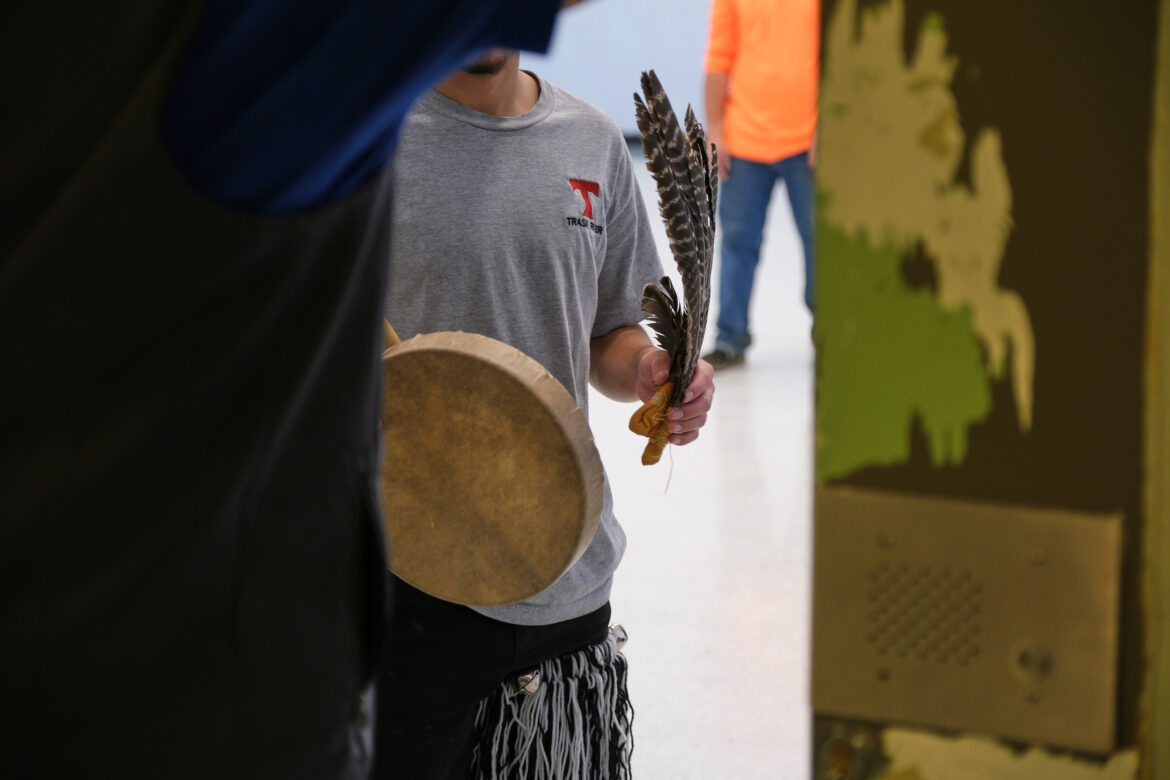
Alex Milan Tracy/For Juvenile Justice Information Exchange
Carrying a hand drum and eagle feathers, an incarceree at Tillamook Youth Correctional Facility passes through a security door to join a drumming circle.

Alex Milan Tracy/For Juvenile Justice Information Exchange
While being fanned by smudge smoke, a Tillamook youth holds eagle feathers, which variously connote honor, bravery and strength and historically were bestowed upon Native American war heroes.
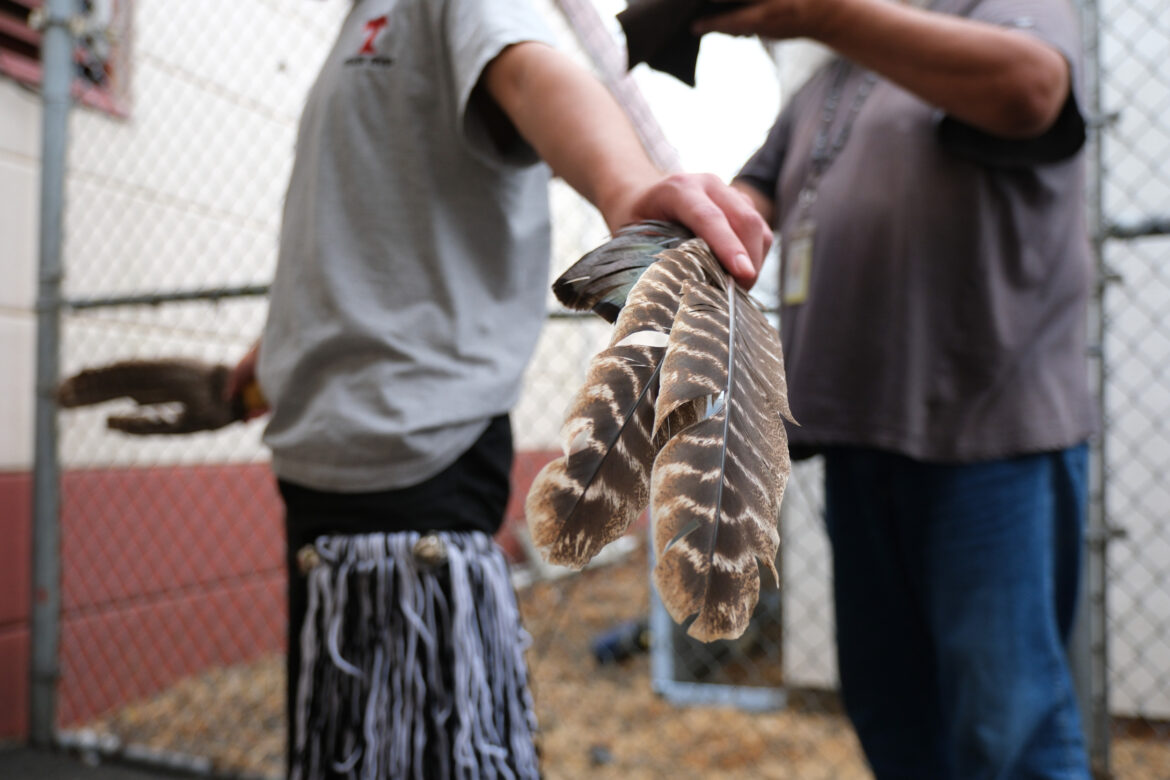
Alex Milan Tracy/For Juvenile Justice Information Exchange
For a youth of Mayan descent, eagle feathers and foot moccasins are part of the ritualistic regalia he dons before dancing to tribal drums.
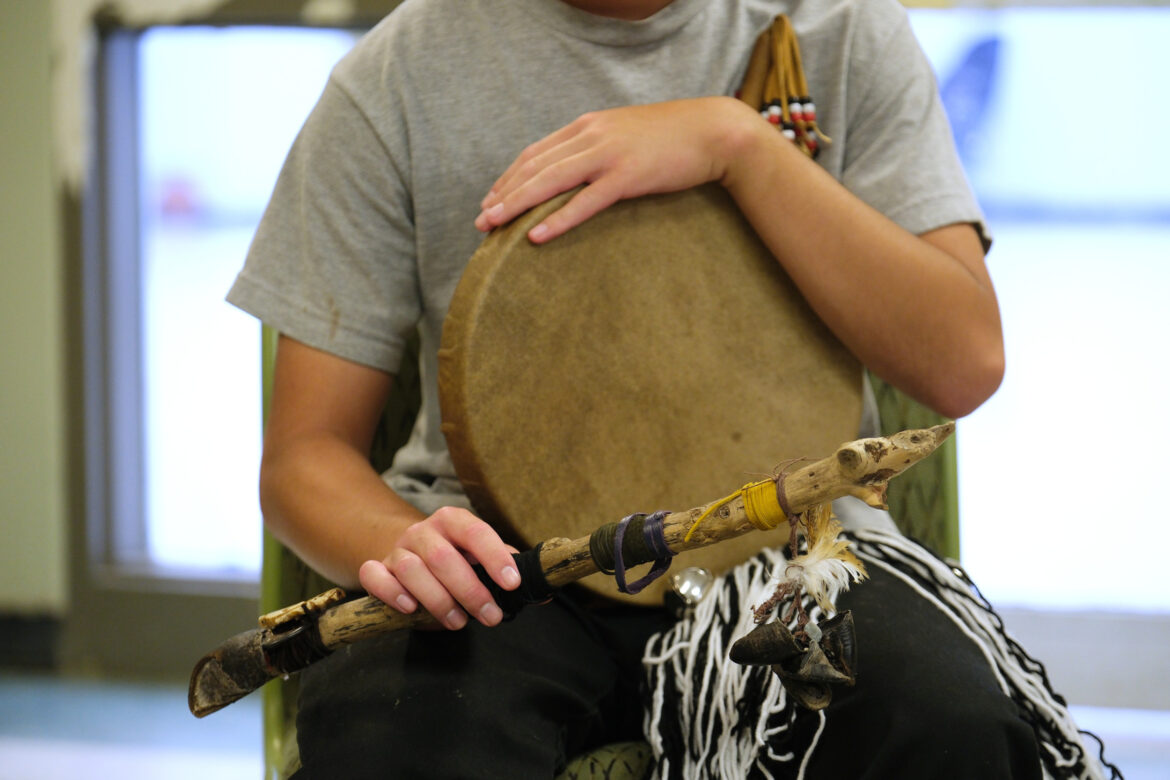
Alex Milan Tracy/For Juvenile Justice Information Exchange
Holding a hand drum and “talking stick,” a youth introduces himself to others in that drumming circle.
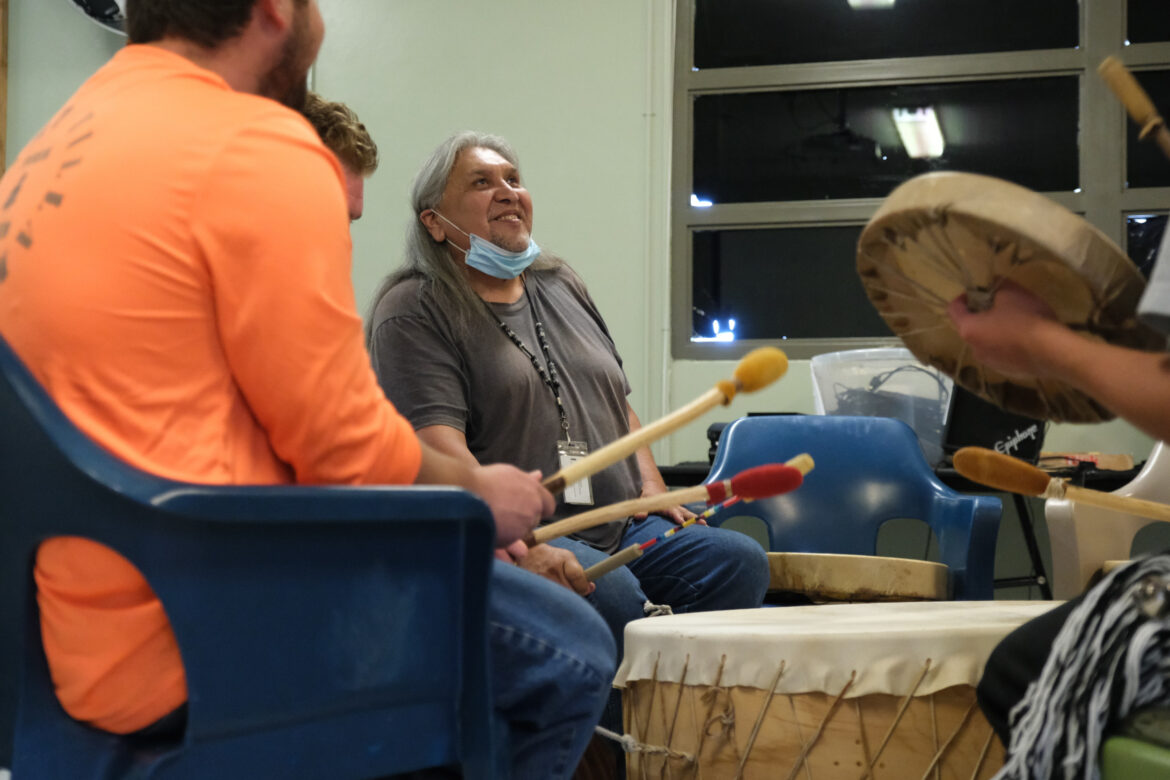
Alex Milan Tracy/For Juvenile Justice Information Exchange
Teaching a fuller Indigenous history than what’s written in most textbooks or may have been left untold by youths’ own families and communities is a goal of Derwin Decker, Native American services coordinator at Tillamook.

Alex Milan Tracy/For Juvenile Justice Information Exchange
Native American Service Coordinator Derwin Decker stands in front of doors leading to locked units housing juveniles at the Tillamook facility.
***
Alex Milan Tracy is a photojournalist based in Portland, Oregon.
